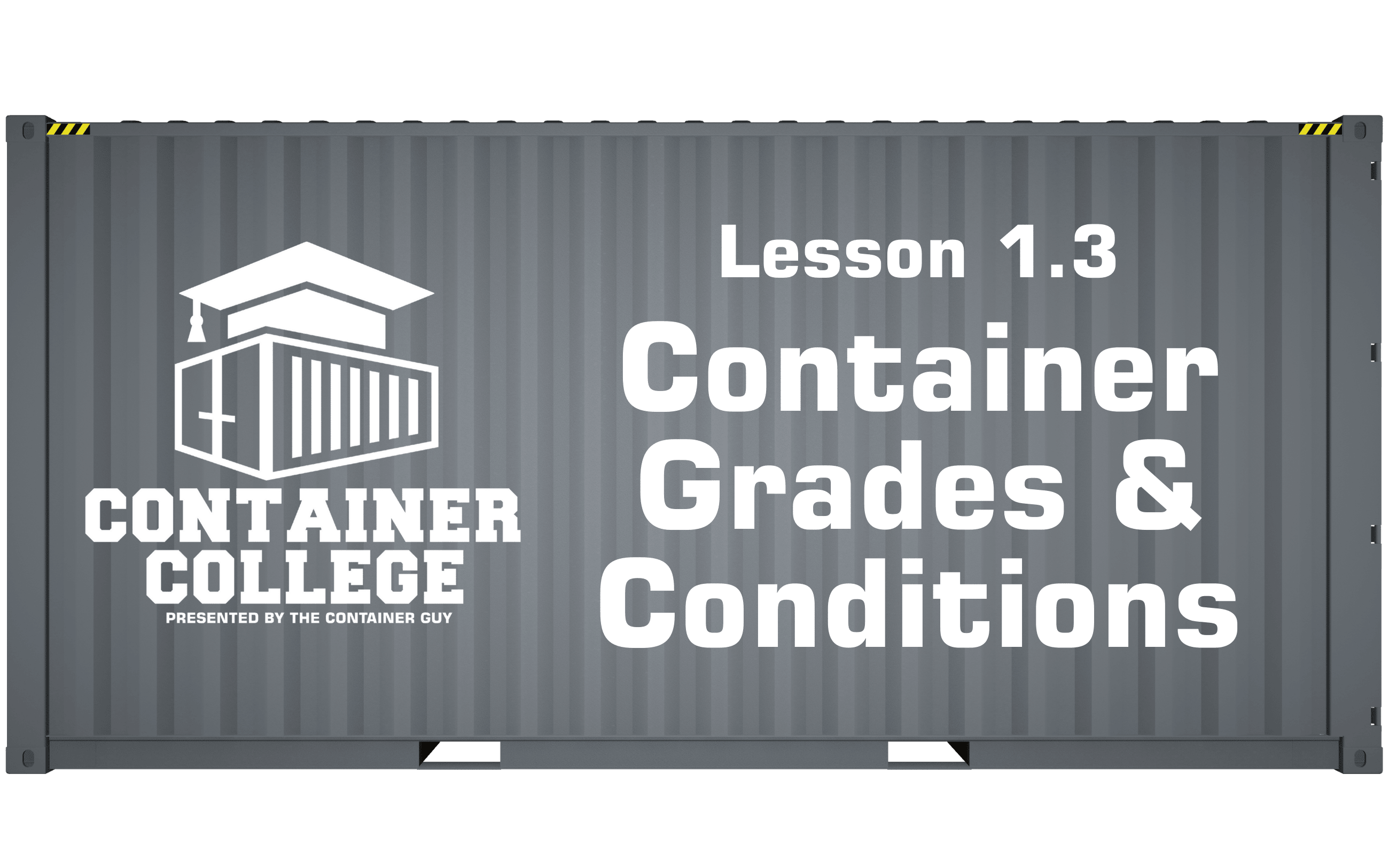
When it comes to buying or modifying a shipping container, not all boxes are created equal. One of the most important things to understand is container grading, because the condition of the container you start with can make or break your project.
At The Container Guy, we supply containers for all types of builds, and we want to make sure you get the right container for your needs. In this post, we’ll break down the different container grades and what they actually mean.
Why Container Grades Matter
Before you cut your first hole or frame a single wall, the grade of your container affects:
- How watertight and structurally sound it is
- How much prep or repair is needed before modifying
- Whether it’s suitable for residential, commercial, or storage use
- Its resale value once modified
Common Container Grades Explained
1. One Time Use (OTU)
- Only Used Once (One Trip)
- Perfect for Storage
- Can be CSC Certified for Ocean-Vessel Shipment
- Very few dents or scratches (if any at all)
- Won’t require any painting
- Won’t require pressure wash
- Surface rust is very minimal
Many local municipalities or inspectors require the use of OTU condition containers for varying reasons. In California, you are required to provide assurance that no hazardous materials were shipped in the container during its maiden voyage from China. Other municipalities require it for cosmetic reasons. Often, engineers will require OTU condition containers to be used in container builds to ensure that previous damage has not affected the container structure.
2. Cargo Worthy (CWO)
- Perfect For Storage
- Secure, Rodent Proof & Watertight
- Can be CSC Certified for Ocean-Vessel Shipment
- Many dents or scratches (if any at all)
- May require some painting
- May require a pressure wash
- Some surface rust should be expected
If you’re looking for a used shipping container to export, we recommend a CWO (cargo-worthy) container. CWO containers are used shipping containers ranging in age from 10-15+ years old that will pass a CSC (container safety certification) survey.
3. Wind and Water-tight (WWT)
- Condition: Guaranteed to keep wind and water out, but no longer suitable for international shipping
- What to Expect: More cosmetic wear, but functional
- Best For: Stationary storage sheds, tool lockers, or short-term structures
- Mod Tip: Good for budget builds, but always inspect the flooring and corners.
Wind & Water Tight shipping containers are used shipping containers that won’t leak and are useful for storage, but they can no longer pass a CSC (Container Safety Certification) survey.
Roughly 12-15+ years in age, wind and water-tight containers have been retired from shipping service by the intermodal companies that own them. While they can no longer meet the strict requirements to be stacked 7-high while loaded, they were being used for freight up until they were sold.
4. AS-IS
- Condition: No guarantees—may have holes, structural damage, or missing parts
- What to Expect: Cheapest option, highest risk
- Best For: Scrap projects, heavy customization, or repairs if you’re on a tight budget and handy with a grinder
- Mod Tip: Only recommended if you’re experienced and plan to reinforce or repair major damage.



